High sphingomyelin levels induce lysosomal damage and autophagy dysfunction in Niemann Pick disease type A
- PMID: 24488099
- PMCID: PMC4013520
- DOI: 10.1038/cdd.2014.4
High sphingomyelin levels induce lysosomal damage and autophagy dysfunction in Niemann Pick disease type A
Abstract
Niemann Pick disease type A (NPA), which is caused by loss of function mutations in the acid sphingomyelinase (ASM) gene, is a lysosomal storage disorder leading to neurodegeneration. Yet, lysosomal dysfunction and its consequences in the disease are poorly characterized. Here we show that undegraded molecules build up in neurons of acid sphingomyelinase knockout mice and in fibroblasts from NPA patients in which autophagolysosomes accumulate. The latter is not due to alterations in autophagy initiation or autophagosome-lysosome fusion but because of inefficient autophago-lysosomal clearance. This, in turn, can be explained by lysosomal membrane permeabilization leading to cytosolic release of Cathepsin B. High sphingomyelin (SM) levels account for these effects as they can be induced in control cells on addition of the lipid and reverted on SM-lowering strategies in ASM-deficient cells. These results unveil a relevant role for SM in autophagy modulation and characterize autophagy anomalies in NPA, opening new perspectives for therapeutic interventions.
Figures
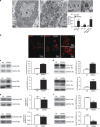
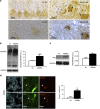
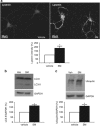
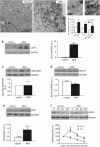

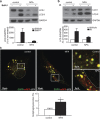


Similar articles
-
Lipid-induced lysosomal damage after demyelination corrupts microglia protective function in lysosomal storage disorders.EMBO J. 2019 Jan 15;38(2):e99553. doi: 10.15252/embj.201899553. Epub 2018 Dec 7. EMBO J. 2019. PMID: 30530526 Free PMC article.
-
Induced Pluripotent Stem Cells for Disease Modeling and Evaluation of Therapeutics for Niemann-Pick Disease Type A.Stem Cells Transl Med. 2016 Dec;5(12):1644-1655. doi: 10.5966/sctm.2015-0373. Epub 2016 Aug 2. Stem Cells Transl Med. 2016. PMID: 27484861 Free PMC article.
-
Massive Accumulation of Sphingomyelin Affects the Lysosomal and Mitochondria Compartments and Promotes Apoptosis in Niemann-Pick Disease Type A.J Mol Neurosci. 2022 Jul;72(7):1482-1499. doi: 10.1007/s12031-022-02036-4. Epub 2022 Jun 21. J Mol Neurosci. 2022. PMID: 35727525 Free PMC article.
-
Brain pathology in Niemann Pick disease type A: insights from the acid sphingomyelinase knockout mice.J Neurochem. 2011 Mar;116(5):779-88. doi: 10.1111/j.1471-4159.2010.07034.x. Epub 2011 Jan 7. J Neurochem. 2011. PMID: 21214563 Free PMC article. Review.
-
Solving the secretory acid sphingomyelinase puzzle: Insights from lysosome-mediated parasite invasion and plasma membrane repair.Cell Microbiol. 2019 Nov;21(11):e13065. doi: 10.1111/cmi.13065. Epub 2019 Jun 10. Cell Microbiol. 2019. PMID: 31155842 Free PMC article. Review.
Cited by
-
Host sphingomyelin increases West Nile virus infection in vivo.J Lipid Res. 2016 Mar;57(3):422-32. doi: 10.1194/jlr.M064212. Epub 2016 Jan 13. J Lipid Res. 2016. PMID: 26764042 Free PMC article.
-
Genetic perspective on the role of the autophagy-lysosome pathway in Parkinson disease.Autophagy. 2015;11(9):1443-57. doi: 10.1080/15548627.2015.1067364. Autophagy. 2015. PMID: 26207393 Free PMC article. Review.
-
Autophagy in the light of sphingolipid metabolism.Apoptosis. 2015 May;20(5):658-70. doi: 10.1007/s10495-015-1108-2. Apoptosis. 2015. PMID: 25682163 Free PMC article. Review.
-
Microautophagy regulated by STK38 and GABARAPs is essential to repair lysosomes and prevent aging.EMBO Rep. 2023 Dec 6;24(12):e57300. doi: 10.15252/embr.202357300. Epub 2023 Nov 21. EMBO Rep. 2023. PMID: 37987447 Free PMC article.
-
Ceramides are fuel gauges on the drive to cardiometabolic disease.Physiol Rev. 2024 Jul 1;104(3):1061-1119. doi: 10.1152/physrev.00008.2023. Epub 2024 Feb 1. Physiol Rev. 2024. PMID: 38300524 Review.
References
Publication types
MeSH terms
Substances
LinkOut - more resources
Full Text Sources
Other Literature Sources
Medical
Molecular Biology Databases

